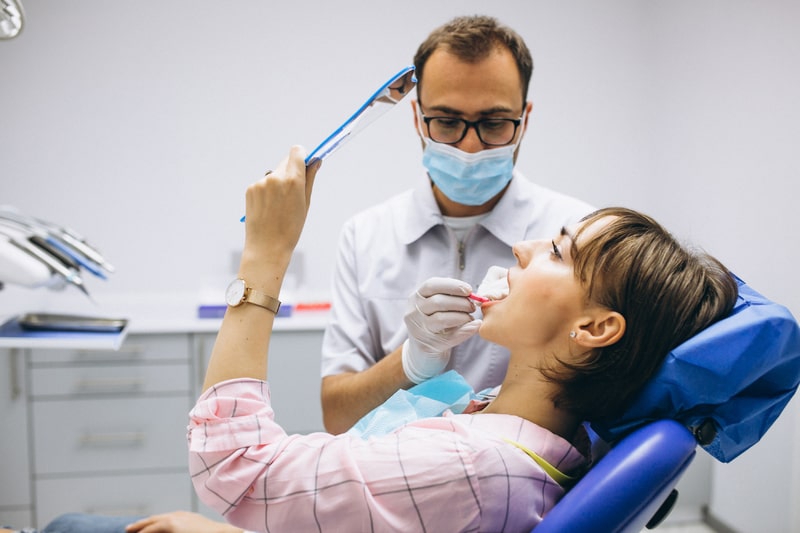
The COVID-19 pandemic has led to a renewed focus on how we can all stay as healthy as possible. To reduce the spread of this virus, we wear masks to cover our nose and mouth, knowing that this is the primary portal where the virus and other bacteria are spread. However, for too many other serious and life-threatening illnesses, the obvious and well-documented correlation between oral health and overall health is generally overlooked.
Systemic Consequences of Oral Health
Clinical literature has documented the connection between oral health and overall health for years, where bacteria in our mouths can be the primary site for the cause or worsening of serious chronic diseases, including heart disease, stroke, diabetes, certain cancers, and Alzheimer’s/dementia.
Most recently, oral health conditions also have been documented to impact COVID-related conditions.
In a recent study published in the Journal of Clinical Periodontology, it was determined that gum disease may raise the chances of hospitalization or death if COVID-19 strikes. The study found that of the 568 patients, those with periodontitis, the most severe form of gum disease, were at least three times more likely to have severe COVID‐19 complications.
Additionally, periodontitis has been connected to high blood pressure. The American Heart Association confirms this link in reporting a study of 500 adults with and without gum disease that found that approximately 50% of adults could have undetected hypertension.
Periodontitis afflicts over 40% of all adults in the United States and can lead to significant dental and medical consequences. There are safe and affordable treatment options available for individuals with periodontitis after being properly diagnosed by a dental professional.
Simply visiting the dentist and taking care of your oral health can vastly improve your overall health, and it is our job to work with medical professionals hand in hand to bridge the gap for our patients.
What is surprising is that with all this evidence, except for ENT specialists, most physicians are comfortable still viewing the mouth as the domain of the dental, not medical, profession. It is time for this to change and to put the mouth back in the body where it obviously belongs.
The Legal Divide
Unfortunately, legal obstacles in most states prohibits physicians and dentists from practicing together in the same group. This leads back to the same issue, an illogical historical chasm between two vital healthcare services.
ProHEALTH Dental’s unique model of integrating dental and medical services bridges the gap that the legal issues create with four key goals in mind.
• Educate the public about the importance of oral health and that dentistry is a lot more than just restorative and cosmetic care of our teeth.
• Educate physicians and dentists about the need to work together and coordinate care for the betterment of the patients they serve.
• Educate the insurance industry that coverage for oral health services will save vast sums in future costs of healthcare and help their insureds lead healthier and more productive lives.
• Develop coordinated care protocols for diseases where the literature is clear that poor oral health is a causative or exacerbating factor.
Since its founding in 2015, ProHEALTH Dental has entered into clinical affiliations with leading healthcare systems such as the Mount Sinai Health System, as well as large medical groups including ProHEALTH Care, Riverside Medical Group, Westmed Medical Group, and CareMount Medical, which collectively include thousands of physicians who serve more than 3.5 million patients. Through these affiliations, ProHEALTH Dental creates a coordinated care model that includes:
• Cardio-diagnostic and sleep apnea screenings as part of routine dental hygiene visits with any abnormal findings reported to the patients’ treating physicians.
• Development of clinical protocols for patients whose underlying medical conditions pose an enhanced risk if they suffer from poor oral health.
• Patient education tools and surveys to ensure they understand that their mouths and bodies are connected clinically.
• Medical data sharing and creating a path to an integrated electronic health record.
To our knowledge, no other community-based dental organization has as its mission and model to break down the anachronistic and illogical chasm between medicine and dentistry and look to the whole patients’ health.
Every day, our clinicians at ProHEALTH Dental tell our patients to “put your health where your mouth is.” We believe it’s time for healthcare professionals, medical and dental schools, professional societies and governing bodies, and insurers to work together to do the same.
More information about this vital issue can be found at phdental.com.
Dr. Cooper is the founder, board chair, and clinical advisor at ProHEALTH Dental. He is board certified in internal medicine. He earned his MD at New York Medical College and completed his residency at North Shore University Hospital in Manhasset, New York.
Mr. Travis is the CEO at ProHEALTH Dental. Previously, he was executive vice president and general counsel of an international cancer company, where he oversaw all mergers and acquisitions. He began his career as a practicing lawyer and founded a law firm focused on healthcare.
RELATED ARTICLES
THE REAL PURPOSE OF THE NEW PATIENT PHONE CALL – CLICK HERE
DENTAL SUCCESS BEGINS AT THE FRONT DESK – CLICK HERE
VALUE EVERY PATIENT’S EXPERIENCE – CLICK HERE











